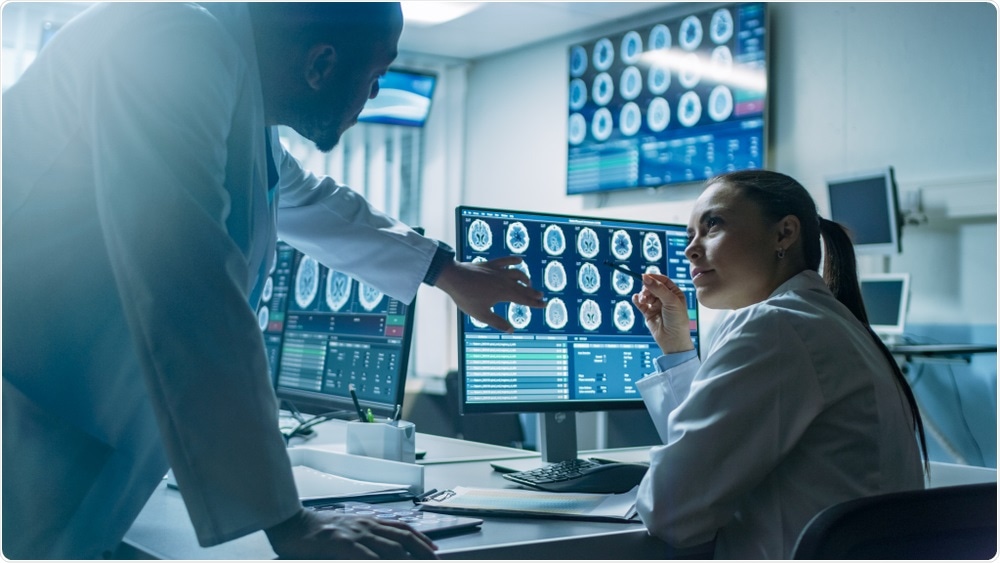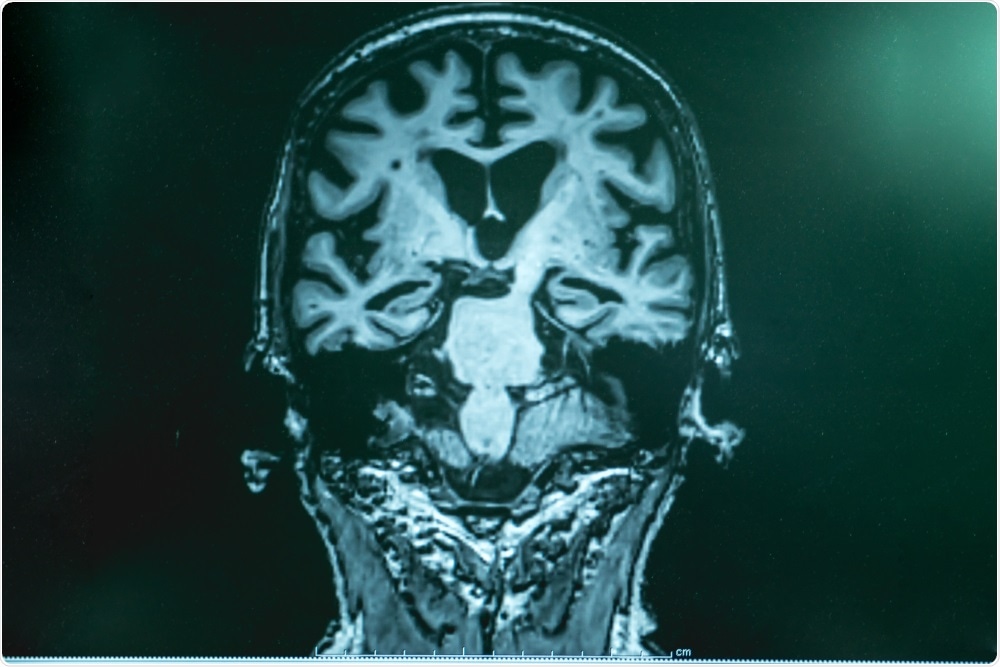Neuroscience is the scientific study of the nervous system and is a branch of biology, also known as neurobiology.

Image Credit: Gorodenkoff/Shutterstock.com
The study of major biological disciplines in neuroscience are generally prefixed with ‘neuro- ‘, including neurophysiology and neuroanatomy. Compared to psychology; which is the study of human behavior and the mind, neuroscience is the physical study of the brain and nervous system with common biological techniques.
Different Levels of Neuroscience
As with most biological disciplines and areas, neuroscience can be studied at the molecular level through to the whole brain/body level. Advances in molecular biology and electrophysiology techniques have greatly advanced neuroscience research in the past century.
Furthermore, within the last couple of decades, advances in computer technology have led to the emergence of computational neuroscience, and advances in imaging techniques have greatly improved diagnostic and research imaging tools to study brain structure and function.
At the smallest scale, molecular and cellular neuroscience aims to study genetics, molecular biology, cellular & synaptic structure and function in development, health, and neurological disease by using conventional molecular biology techniques.
These can either be done using tissue cultures (animal and human) & induced pluripotent stem cell (iPSC)-derived cells, to study novel mechanisms of disease (e.g. the newly identified GLTD81 mutation in ALS patients) and to trial therapeutic agents in.
Neuropathology combines cellular, molecular,4 and tissue techniques to visualize and quantify the extent of pathology (e.g. amyloid-beta plaques in Alzheimer’s disease, or changes to astrocyte morphology), usually in post-mortem tissue.
Systems neuroscience builds upon from the cellular level and focuses on brain circuitry or wider physiology, such as regional cerebral blood flow changes. For example, animal models can be used to interrogate brain-region function through electrical stimulation or by lesions.
Whole areas of the somatosensory cortex can be imaged for neuronal activity using GCaMP, as well as changes to blood flow through laser-Doppler flowmetry or changes to hemoglobin concentrations by using optical imaging.
Furthermore, a multimodal approach can be used to study neural activity with an electrode and cerebral hemodynamics in mouse models of Alzheimer’s disease for example. Systems neuroscience also aims to investigate wider nervous system circuitry such as nociception or the visual system.
Cognitive and behavioral neuroscience focuses on how psychological functions are produced in the brain or related to neural activity. This can be studied using animal models or human subjects by an array of imaging techniques such as fMRI, PET & EEG, correlating brain signals (BOLD or electrical) to specific tasks or functions in the field of neuropsychology.
Furthermore, many preclinical studies using animal models have to test the phenotype and effects of treatment on behavior; such as cognition, thus an array of behavioral tests for animals (in addition to clinical tests) are also associated with behavioral neuroscience.
Computational neuroscience models and simulates all aspects of neuroscience from the molecular level (e.g. action potentials & nanoparticles) all the way through to modeling the effect of systemic drugs on wider neural networks or modeling tactile touch sensation.
This is a rapidly emerging and developing field and will have a major play across all neuroscience disciplines and research areas in the future, combining bench-lab work with computational models.
Translational neuroscience aims to translate preclinical findings from animal and cell research into effective clinical trials and therapeutic strategies for patients. Examples include drug screening for thousands of compounds of animal models or cell models.
Spearheading preclinical research into meaningful human therapies is challenging due to the complexity of human physiology compared to model organisms and does not necessarily always pass clinical trials.
Nonetheless, several notable therapies that were originally tested in animals have proven to be effective in humans including advances in gene therapy for neurological diseases and many anti-epileptic drugs in the treatment of epilepsy.
Furthermore, specific serum biomarker tests have originally come from research using animal models.
As with a lot of basic and translational neuroscience research across all subdisciplines, research areas, and scale of neuroscience research, human tissue, animal models and cells derived from either can be used.
However, neuroscience is not limited to the study of the human nervous system and disease (or modeling human disease by using animal models) but can also expand to understanding the nervous systems of other species from honeybees to chimpanzees.
Evolutionary neuroscience aims to explore how the nervous system has developed from simple collections of neurons to the vastly expanded gyrencephalic brain of some primates including humans.
Neurological Disease Research Areas
Research areas within neuroscience and neurology can focus on different aspects of health and disease using a whole spectrum of neuroscience techniques ranging from molecular neuroscience through to clinical imaging and mathematical modeling:
- Neurodegenerative – the study of neurological diseases such as Alzheimer’s disease, Parkinson’s disease, Huntington’s disease, motor neuron disease, and spinal muscular atrophy.
- Cerebrovascular – the study of brain blood vessels, cerebral blood flow (heart-brain axis) and disorders of cerebral blood vessels/flow such as ischaemic and hemorrhagic stroke, vascular dementia & CADASIL
- Neuroimmune – the study of nervous system disorders with autoimmunity such as multiple sclerosis, myasthenia gravis, and Guillain-Barré syndrome
- Neurosensory – the study of neurosensory physiology (e.g. visual system) and pathophysiology involved in the senses such as hearing loss, visual/optic conditions, and pain conditions e.g. trigeminal neuralgia, as well as nerve conditions including palsy/facial paralysis
- Neuroendocrinology – the study of how the brain regulates hormones through the hypothalamic-pituitary-adrenal (HPA)-axis, and in diseases with a dysfunctional neuroendocrine function such as diabetes insipidus, Addison’s disease, Grave’s disease, and diabetes mellitus
- Neuropsychiatric – the study of conditions such as schizophrenia, depression, anxiety, OCD, eating disorders, phobias and addictions
- Neurodevelopmental – the study of developmental conditions such as ASD, dyslexia, Tourette’s syndrome, Fragile X syndrome & ADHD
- Neurochemistry – combining neuropharmacology and neurobiology to understand the effects of chemicals such as drugs on the brain and how they can lead to e.g. addiction (and how to cure addiction)

Image Credit: Atthapon Raksthaput/Shutterstock.com
Often there is much overlap between research themes concerning the same conditions. For example, Alzheimer’s disease can be considered both neurodegenerative, cerebrovascular, and neurocognitive (psychiatric). Others like motor-neuron-disease are both neurodegenerative and neuroimmune.
Translational neuroscience compasses basic neuroscience research into neurological disease at all different basic and preclinical levels and then aims to translate those findings into clinical trials.
In addition to translational research, other basic neuroscience research areas can also help to understand the cellular basis of action potentials, or the neurophysiology of neurovascular coupling, or the normal function of particular receptors or cell types in healthy individuals and animals, not necessarily in disease.
Decades of neuroscience research at all levels has led to great improvement to our understanding of disease mechanisms as well as general mechanisms of nervous system function, mainly due to the advances of technology at all levels of neuroscience.
Research has also led to the development of effective treatments for many neurological conditions.
However, there are still many research gaps and a lack of disease-modifying treatments (or cures) for some of the major neurological conditions such as Alzheimer’s disease, and these remain a priority for neuroscience research.
The hope is in the next couple of decades, we will be in a better position concerning therapies for presently incurable diseases.
Further Reading